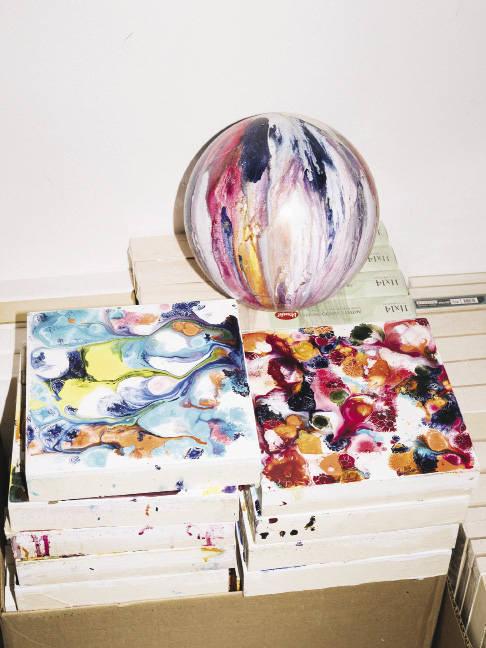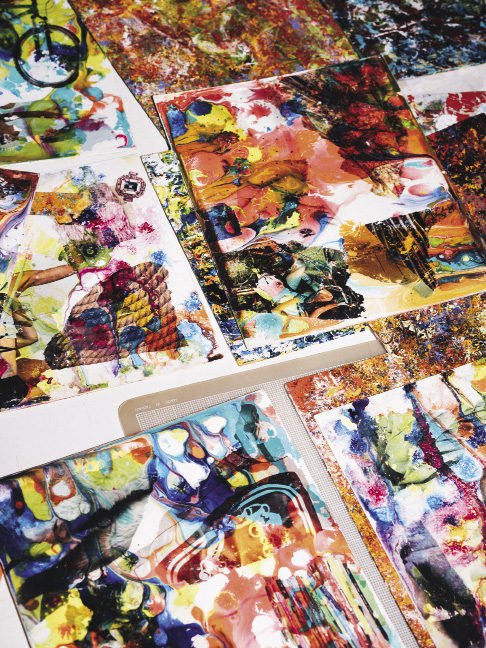Professor Joan Snitzer, who joined Barnard’s faculty more than thirty years ago, cochairs the College’s Art History Department, and directs its studio arts Visual Arts program, has another occupation: working artist. While the demands placed by both the art industry and academia are exceptionally high, Snitzer has nevertheless continued to paint and exhibit her work internationally. Her shows can be seen in galleries as far away as Paris, Berlin, and even Kochi, India.
That’s not where she started, though. Instead, Snitzer came of age on the streets of early 1970s New York, and most especially in the halls of the feminist gallery A.I.R.—the country’s first not-for-profit, artist-directed and -maintained gallery for women. (When it opened, A.I.R. was based in Soho. Now, it’s located in Brooklyn.)
In that gritty era, few women were able to succeed in the art world. They were often considered hobbyists and frequently subject to sexual harassment from professors and mentors. No matter how skilled or impactful their pieces, female artists were encouraged to stay within the realm of representational genres such as portraiture. “When you brought your work to a gallery or museum,” Snitzer recalls, “they’d say, ‘We don’t deal with women. Period.’ They even questioned if women could be artists” at all.
Snitzer rebelled and joined the community at A.I.R. (The name is short for Artist in Residence.) There, she found solidarity and the space to build her career as a maker of works that combine abstraction, texture, and fluidity.
At A.I.R., she says, “I finally felt I was in a place where people understood me. I didn’t want to leave, and I didn’t.” Even as she directs Barnard’s studio arts program, Snitzer remains active in the organization, and lends her eye to its younger artists as they produce work shaped by a feminist perspective.
It’s this perspective that Snitzer has been in dialogue with over the last four decades.
Her works are poetic, often exploring the interplay between painting and photography, object and idea.
Snitzer’s recent series, titled Chromophore, for instance, achieves a colorful layering of photo ink, vinyl, and oil paint. She mixes her paint media herself and has intentionally created a color palette featuring the bright, saturated hues often found on digital screens. Her color choices express and question the new visual standards of our day—standards in which color is always digitally amplified to attract both attention and Internet pageviews. This choice contrasts sharply with the palettes of the twentieth century, and the antipolitical, abstract art with which Snitzer’s work is in dialogue. As such, her compositions produce a textured space with freedom from reference, similar to earlier, abstract art, yet function as modern meditations that question our gaze and the visual preferences of today.


In other artists’ works, such an amalgamation of color might devolve into chaos. But Snitzer’s paintings use complexity and handmade marks to form a calm constant. There is peace within her intricacy. The results are canvases that convey harmony during uncertain times, and understanding without the need for oversimplified definition.
The messages Snitzer articulates in her work are also echoed in her teaching. When she joined Barnard in 1986, the College already felt like home to her—many of A.I.R.’s early members were Barnard grads.
During the school year, Snitzer can be found in the company of budding artists who study under her guidance. Their lessons together explore the art-history canon, and how her students’ artwork, process, and technique can be placed within it. “One can feel much more secure and grounded in one’s practice with a broad knowledge of what has come before,” Snitzer says.
She encourages her students to use their artwork to continue the conversation that she and her A.I.R. colleagues started years ago, and to create not just art, but work that builds toward a better tomorrow. •
